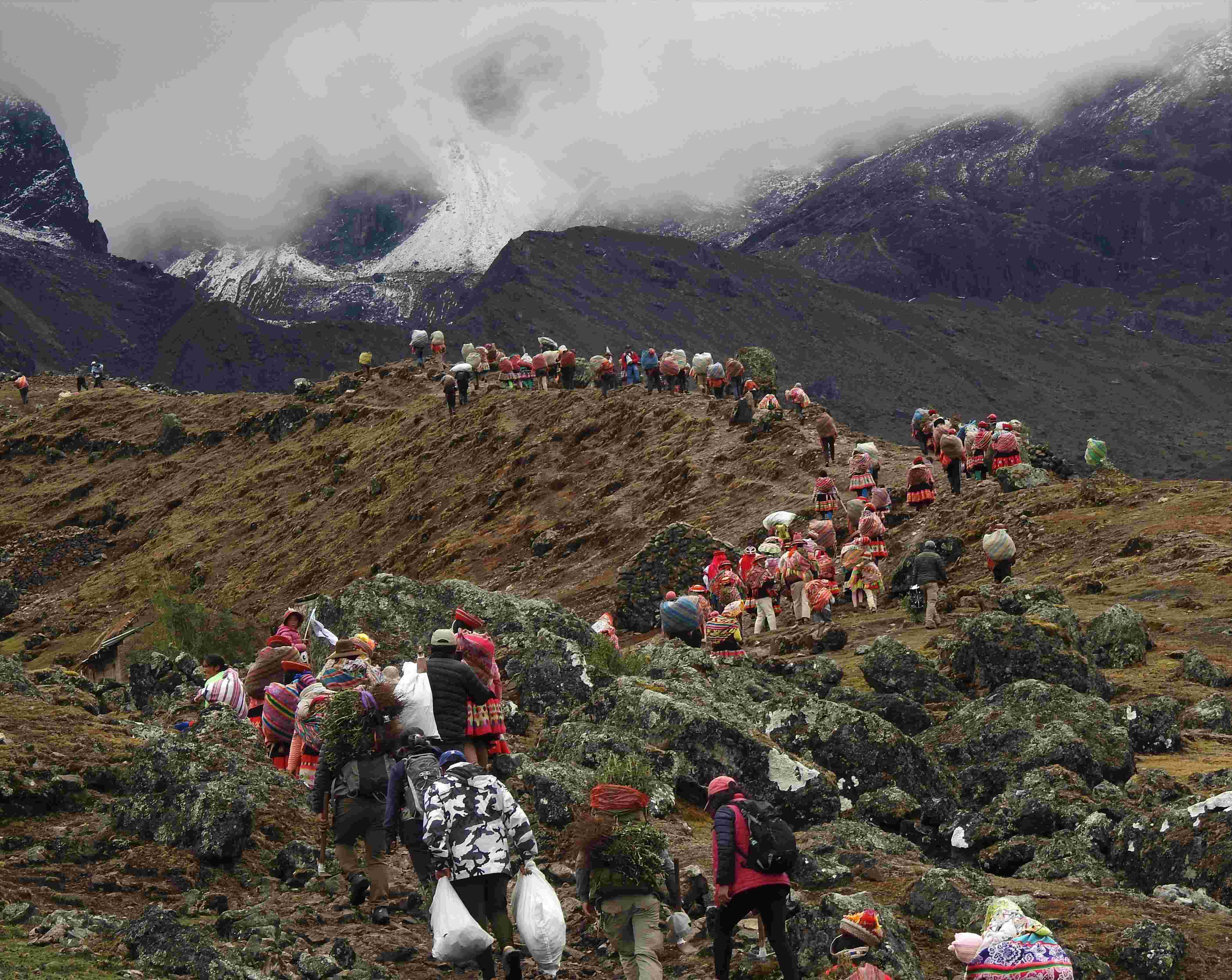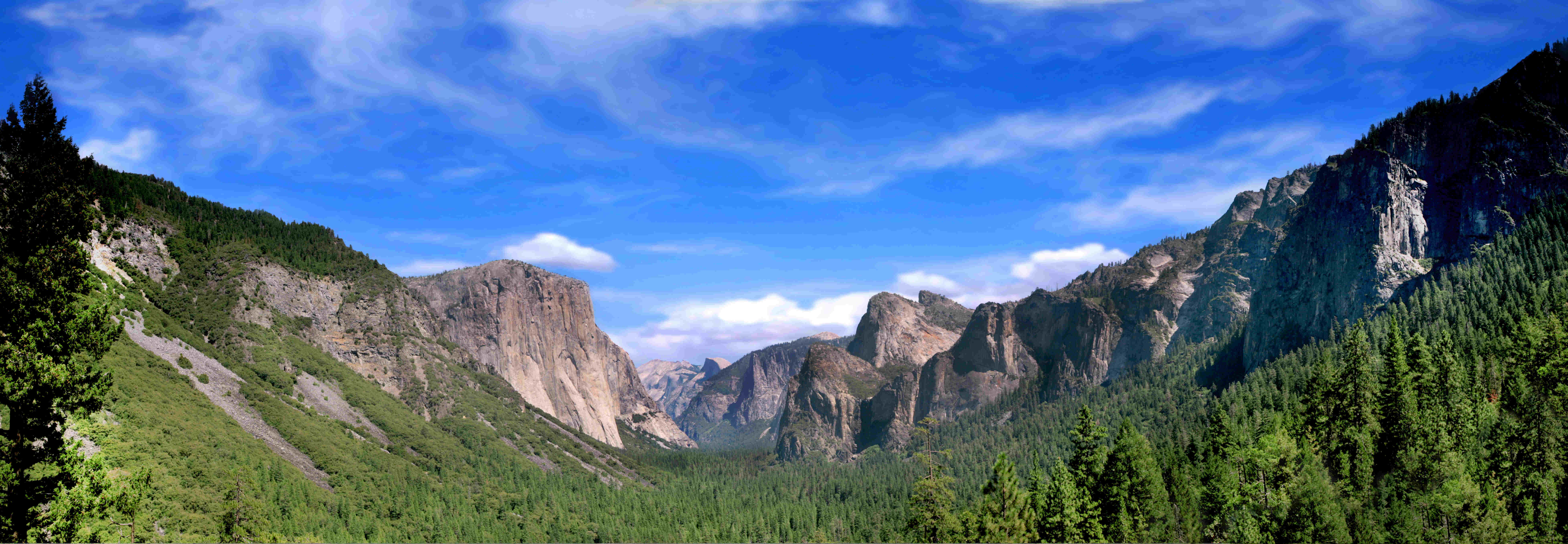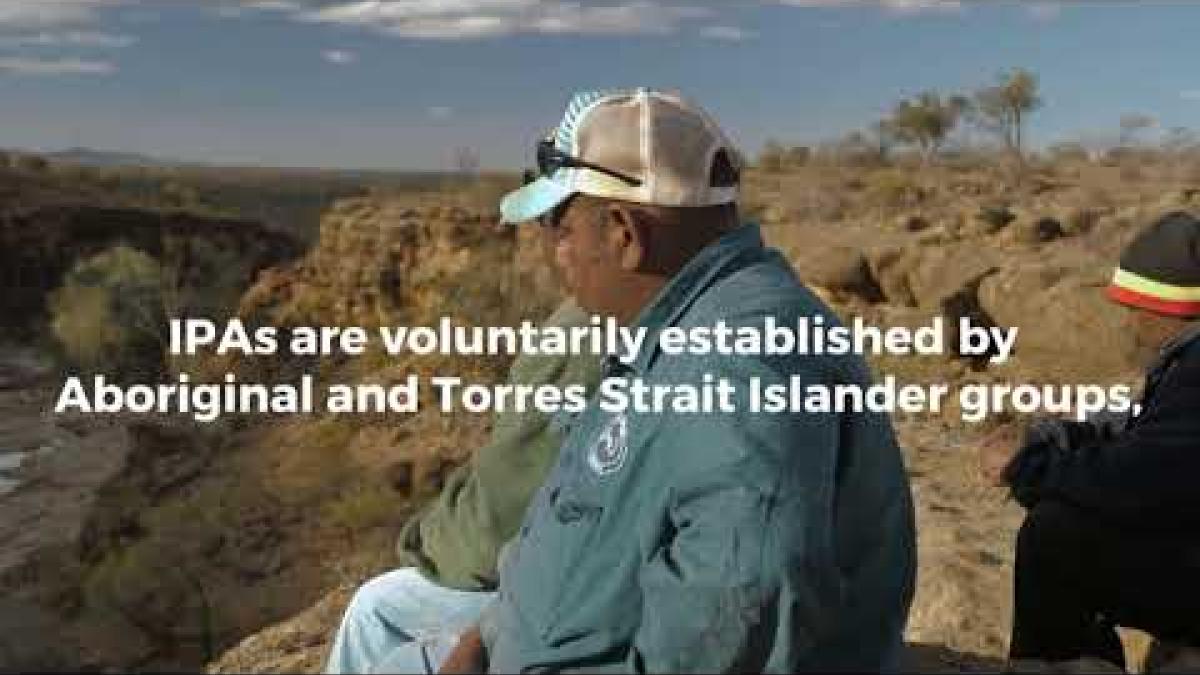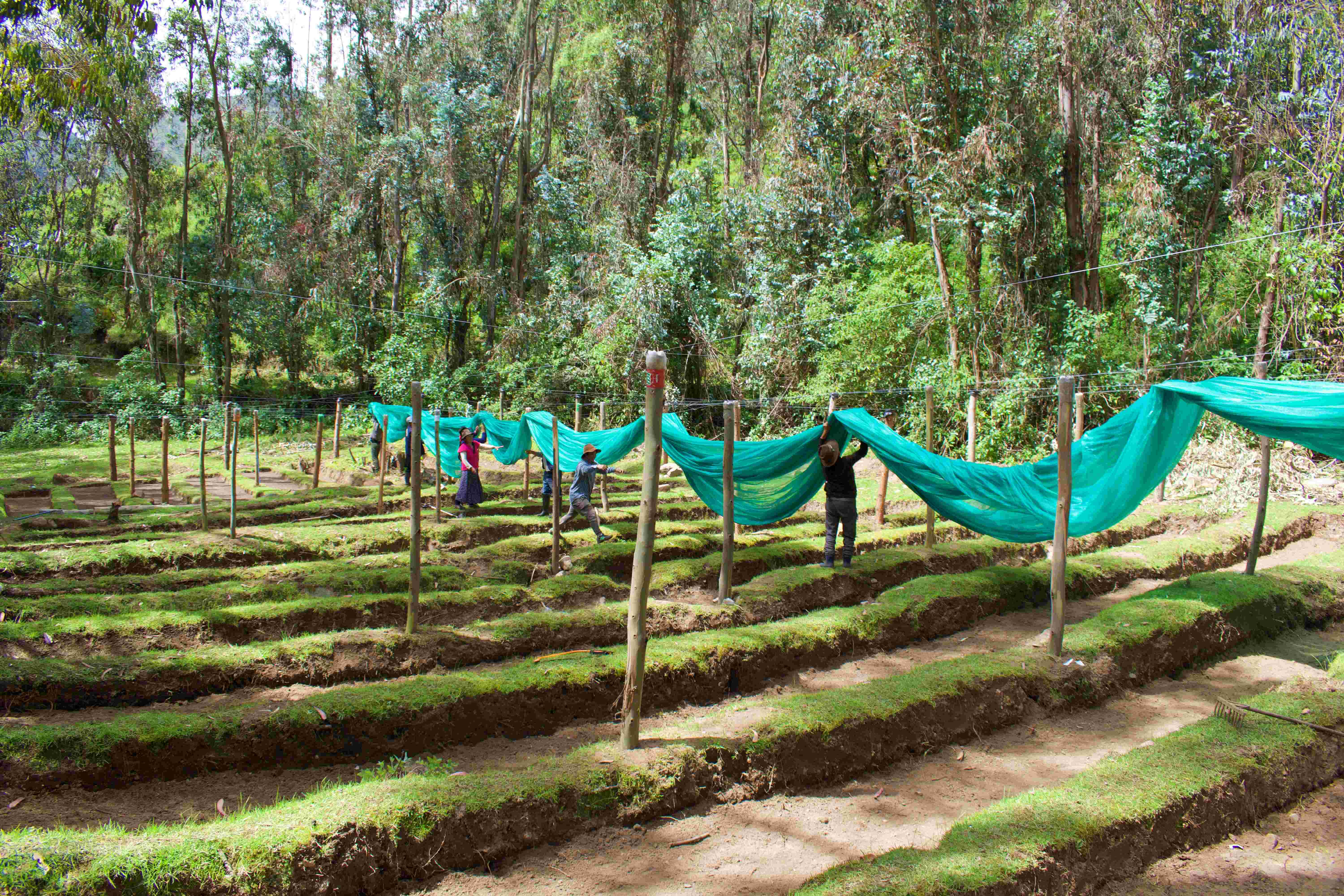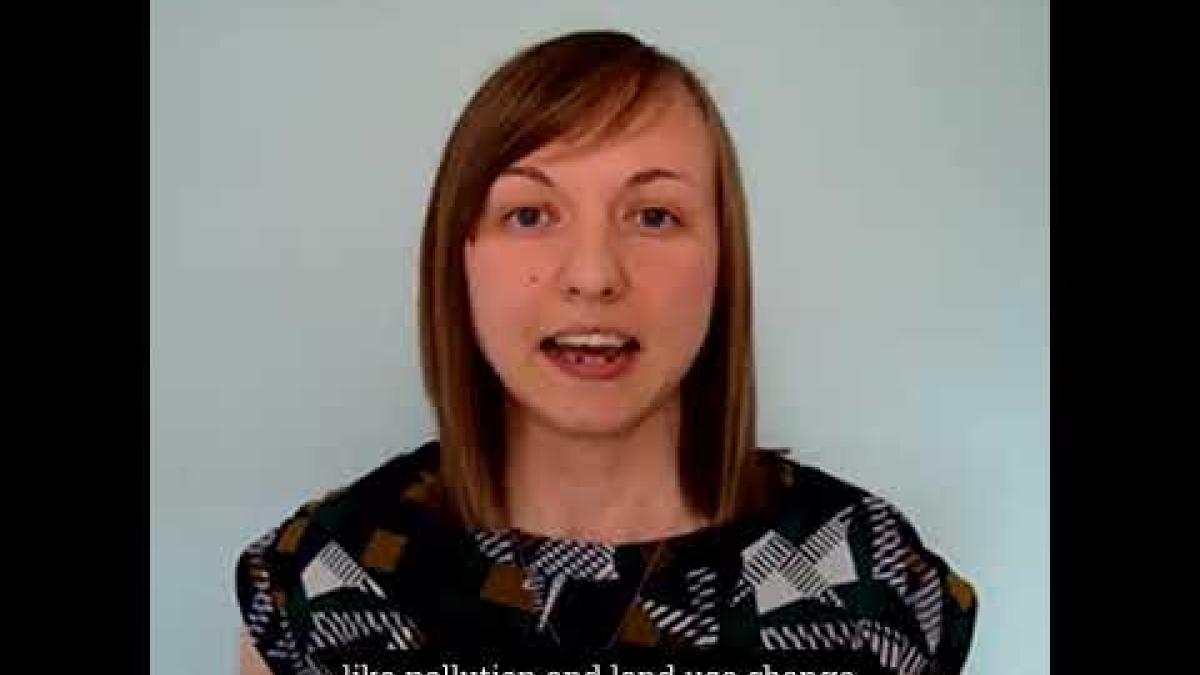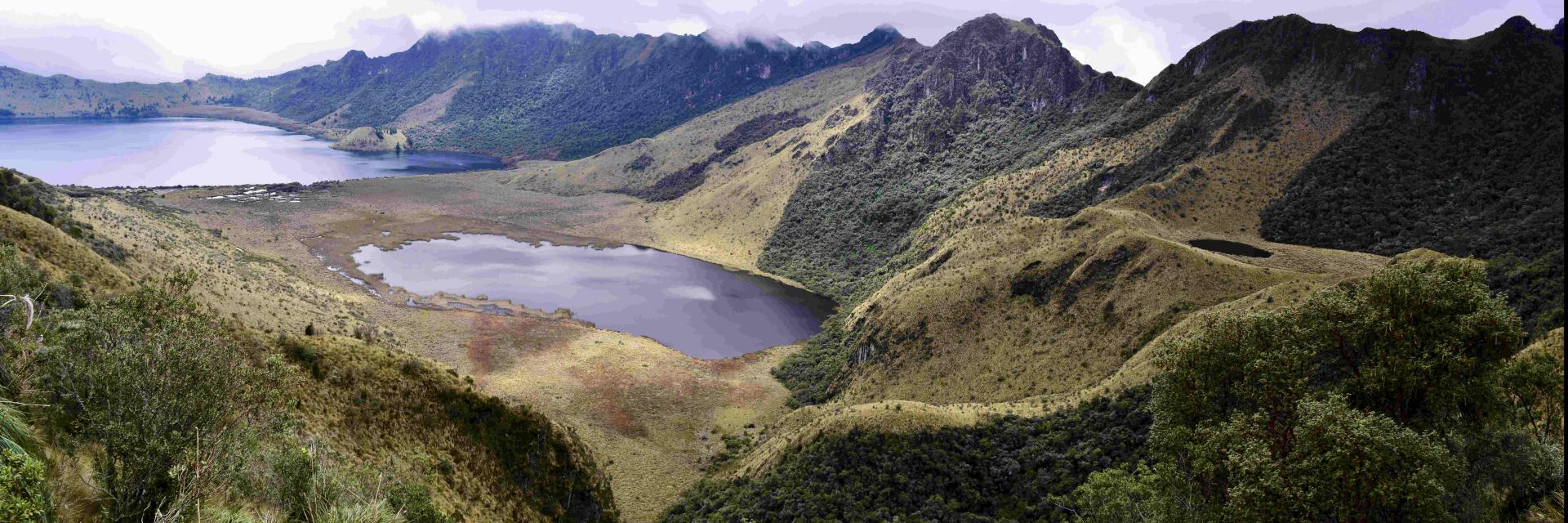
Pichincha - Mojanda Lagoons, Peru. An Aves y Conservación-protected area.
Courtesy of: Acción AndinaLand Protection
Protect landscapes critical for biodiversity and carbon sequestration to maintain stable environments, cultural continuity, and a livable planet.
Ecosystem services from biodiversity, such as pollination, clean water, flood reduction, food, and carbon sequestration, are estimated to be worth $125-140 trillion, up to 150% of our total global Gross Domestic Product. When done right, protecting land preserves these benefits and enables the survival of traditional lifeways and good livelihoods for local communities. However, the planet is losing species far faster than at any other time in human history, with about one million species threatened with extinction in the next few decades. Meanwhile, millions of acres of ecosystems irreplaceable for biodiversity, carbon sequestration, and carbon storage, such as peatlands, tropical forests, and wetlands, are being degraded by industrialized agriculture, mining, or urban sprawl. Indigenous Peoples and local communities (IPLCs) inhabit over half the world’s land surface, and their territories shelter more threatened species and store more carbon than all existing protected lands put together. Effective protection requires prioritizing irreplaceable areas, providing funding and legal structures that enable functional stewardship, and collaborating with IPLCs and other stakeholders for sustainable, socially just policies that consider Traditional Ecological Knowledge.
Action Items
Individuals
Learn about land protection and its benefits. Protecting land has an enormous climate impact, partly by preventing its conversion to uses that increase carbon emissions and partly by sequestering a large proportion of the carbon currently taken up by healthy ecosystems. It also helps with climate adaptation by creating more resilient landscapes and buffering human communities. Currently, about 17% of land and inland waters are protected through management for conservation or other effective conservation measures (OECMs). Wilson’s Half-Earth proposal argues for protecting 50% of the planet, and global 30x30 efforts work toward protecting 30% of terrestrial area by 2030 to preserve habitats essential to maintaining the planet’s biodiversity. The Land Back movement and other efforts work to ensure that Indigenous Peoples can manage their land effectively and redress the harms of colonization.
- Our human footprint (the modification of land and ecosystems) is increasing. Only about 27% of land is still wild, meaning that beyond protection, restoration is necessary to safeguard biodiversity. Protecting irrecoverable carbon ecosystems, such as peatlands or mangroves, which store enormous amounts of carbon, is especially critical. Less than half of those lands are protected, and nearly a third are managed by IPLCs. See a map of protected lands.
- “Fortress conservation,” land management based on the idea that people inevitably damage nature, meaning that it should be protected by force if necessary, continues to evict Indigenous Peoples and Local Communities. Even when these groups have been highly effective stewards, laws rarely recognize the land as belonging to the community. Conservation measures such as parks or wildernesses have often excluded Indigenous Peoples from their lands and ignored the value of Traditional Ecological Knowledge for management. Examples include (but are far from limited to) the U.S., where the Southern Sierran Miwuk were gradually pushed out of Yosemite National Park; Canada, where the Gakijiwanong Anishinaabe (Lac La Croix) were forcibly removed from Quetico Provincial Park and continue to face limits to how they can use its lands; and the Democratic Republic of Congo where Batwa people were expelled from Kahuzi Biega National Park and continue to be harassed and murdered while wildlife within the park decline.
- Land protection is conventionally seen as preserving an area entirely for nature conservation. However, the International Union for Conservation of Nature lists six management categories that emphasize different goals and varying levels of human engagement: nature reserves/ wilderness areas, national parks, national monuments, habitat/species management areas, protected land- or seascapes, and protected areas with sustainable use. Examples include wildernesses that have minimal human intervention, such as 95% of Organ Pipe Cactus National Monument, an International Biosphere Reserve in the US; national parks that conserve large ecosystems while allowing visitation, such as Gran Paradiso National Park in Italy; and protected landscapes, in which ecosystem function and cultural values are intertwined, such as the Dhimmurru Indigenous Protected Area, in Australia. Other effective conservation measures (OECMs) can also manage an area for human subsistence and cultural values while maintaining biodiversity and ecosystem function. Areas may be managed by governments, organizations, individuals, IPLCs, or a mix.
Use conservation easements to protect your wildlife-friendly lands. This is a legal agreement limiting the allowed uses of a property to protect conservation values. These easements often allow farming or ranching but limit development for future generations.
Learn about your bioregion and support local conservation organizations in land protection efforts. Know what important species and ecosystems are present and what conditions are critical to support them. Nonprofit groups often need volunteer help and donations to fund land protection and steward their lands. Simple changes can make a big difference; for instance, restoring water flows to a 23-mile stretch of creek in California doubled the density of breeding birds and increased their diversity.
- Climate Atlas helps zoom in on critical areas in the US for biodiversity and carbon sequestration.
- Take a quiz to see how much you know about your place.
Learn which native cultures are indigenous to your area and support traditional land management techniques.
- Start learning about the Indigenous Peoples of lands you are connected to through the Native Land Digital Map.
- Cultural burning or cool burning is vital to stewardship in California and Australia. Indigenous rangers in Australia’s Fish River Fire Project reduced wildfire dramatically, decreasing carbon emissions and enabling about 13,000 annual carbon credits through cultural burning. Learn more in the Fire Ecology Nexus.
Reduce meat, especially red meat, in your diet. Land conversion to agriculture drives land degradation, and meat production requires up to 100 times as much land as plant production.
Groups
Nonprofits, Indigenous Peoples, and local communities
Understand different models for securing land tenure, land protection, and/or stewardship. Secure tenure, land ownership, and stewardship rights are essential to indigenous peoples' and local communities' success in maintaining healthy ecosystems. See Governance below for other examples.
- In Peru, Acción Andina and its partners work with indigenous communities to create Private Conservation Areas, which include securing title to the protected land. Titling indigenous land has been shown to reduce deforestation.
- In California, Sogorea Te’ Land Trust works to restore land in the highly urban San Francisco Bay Area and restore Native Americans' ancestral relationship with the land.
Build coalitions. Landscape-scale conservation, which implements ecosystem-based management, is most effective, although carefully selected small areas can also be important. It typically requires consultation and effort from multiple stakeholders. No one group can do it alone, meaning that collaboration is essential. This often requires considerable cultural humility for groups with relative privilege and power.
- The Indigenous and Community Conservation Areas Consortium is a global association of Indigenous Peoples and local community custodians that ally in solidarity toward the sustainable self-determination of all custodians of Territories of Life.
- The Sustainable Southeast Partnership was created by collaboration among Tribal governments, Native corporations, conservation groups, and local governments. This partnership works toward healthy lands and communities, guided by trust and Indigenous values, in the Tongass rainforest in Canada.
- The five-Tribe Bears Ears Inter-Tribal Coalition successfully advocated for designating the 1.3 million-acre Bears Ears National Monument, including collaborative management among Tribes and U.S. federal agencies.
- The Jukajoki watershed in Finland has been restored to health—and a critical carbon peatland rewilded—through a collaboration involving non-profit and community organizations, Indigenous Saami, and the government.
Include brokers to bridge between Indigenous land managers, local communities, and government.
- Regional brokers have been critical to the success of indigenous land management in Australia.
- In Thailand, a non-profit bridged local communities and government to create structures for community forest management that reduced deforestation and improved forest health.
Map community land. The LandMark platform makes Indigenous and Local Community lands visible, which can help communities challenge harmful projects, assert their rights, and track land that needs restoration.
- In Brazil, the Kalunga-Quilombo Association is self-recognized as an Indigenous and Community Conservation Area, enabling it to strengthen its governance and clarify its conservation actions. Mapping its area and network of communities for better stewardship was an important milestone.
Land Managers
Use best practices and good tools to ensure sound management. A 2010 study of protected areas found that only 22% were well managed, with 41% needing improved management. Most protected areas had sufficient legal establishment, but funding, infrastructure, monitoring, evaluation, and programs for local communities were likely to be deficient—even though they are essential to successful outcomes.
- The IUCN’s wilderness management manual provides an example of best practices for supervising these lands, many of which are valid for less restrictive protected areas.
- The Akwe: Kon guidelines can be used to assess the cultural, environmental, and social impact of protected areas on IPLCs.
- A number of tools are available for assessing protected area management effectiveness (PAME), such as the Management Effectiveness Tracking Tool (relatively easy to use but not as effective in evaluating biodiversity) or the Enhancing our Heritage Toolkit, developed for World Heritage sites with a strong biodiversity component.
- SMART Tools are open-source, freely available software used in a wide variety of protected areas for a range of data gathering and analysis, from anti-poaching measures in Malaysia to community monitoring of wildlife and harvests in Nunavut, Canada.
Support rangers properly, especially in building community relationships. Proper enforcement of protections while working effectively with IPLCs is essential for conservation outcomes. Rangers play a critical role and must be properly supported with training in safety, ethics, and how to work with local communities, benefits such as life insurance and time off, and facilities and policies that enable their health and well-being.
- Building community relationships reduced wildlife crime and human/wildlife crime in Uganda, while in Colombia, Indigenous residents of national parks co-manage them and preserve their lifeways on the lands.
Restore degraded areas where necessary. Restoration of 30% of the world’s degraded areas by 2030 is part of the Global Diversity Framework that underpins 30x30 land protection efforts. In some regions, most notably Southeast Asia—a cradle of biodiversity—restoration is necessary to achieve sufficient protected, ecologically functional land. High-priority terrestrial ecosystems for restoration include tropical forests, grasslands, and mangroves, all highly effective carbon sinks that are being lost to development and agriculture. The IUCN recommends focusing on maintaining biodiversity and then working toward climate change mitigation and adaptation. See Degraded Land Restoration Nexus.
- Best-practice restoration is effective, efficient, and engaging. Diawling National Park is an example of all three, where engagement with (initially hostile) local communities integrated their knowledge of the ecosystem to improve its hydrology with carefully timed dam releases, thereby increasing biodiversity, improving livelihoods, and enabling mangroves to repopulate for greater carbon storage.
- As with all land protection efforts, stakeholder engagement is essential, especially when restoring connectivity. The Four Returns Framework is an easily communicated approach for engagement in landscape restoration in a way that provides inspiration along with natural, social, and financial returns. The Chilika Catchment Restoration in India used this framework to improve hydrologic processes, increase seagrass acreage and populations of the Irrawaddy dolphin, and restore the local fishery.
Financiers
Provide long-term funding for protected areas. A 2009 study found that the average protected area had deficient and/or insecure funding. Many funders provide short-term grants, yet effective management must be long-term. Meanwhile, investment in nature-based solutions such as land protection is less than half what is needed—and far less than spending on nature-negative activities such as fossil-fuel subsidies.
- Climate change creates immense economic risks, such as supply shocks, unstable pricing, and fragile financial institutions; investing in green bonds can reduce the risk by reducing greenhouse gases, increasing renewable power, improving social safety nets, and supporting disaster risk reduction. Because they are aligned with climate goals, they reduce the risk of stranded assets. They often include tax incentives.
- A number of economic instruments exist for financing conservation. Payment for ecosystem services (such as the Latin America Water Funds), grants, and well-thought-out carbon market investments are a few ways for private investors to fund land protection and restoration.
- Investment in developing markets may have a greater real-world impact.
Companies
Understand how biodiversity is critical to your bottom line. Corporations have a role to play in effective land protection, and they also benefit from it. About half of the global GDP relies on nature in some way. Agribusiness, lumber and paper products, beauty, textiles, and pharmaceuticals are a few examples. Climate change-related demand and supply shocks also affect businesses and supply chain disruption is increasing due to events like wildfires and floods.
- The Taskforce on Nature-Related Financial Disclosures has a useful framework for understanding your vulnerability.
- B Corp certification requires reviewing business practices for climate and environmental impact.
- Partner with organizations and governments to create refugees. Apple partnered with Colombia and Conservation International to protect 18,000 acres of high-priority mangroves in the Vida Manglar project.
Commit profits to land protection. Patagonia now plows its stock dividends into the Holdfast Collective, which recently donated $5.2 million to preserve the Mobile Delta in Alabama. Entrepreneurs in Canada have donated millions to B.C. Parks to acquire land.
Governance
Prioritize protection of especially critical areas, such as irrecoverable carbon. IUCN’s priorities for land protection are: importance for biodiversity, contributions to people (including sustainable use and ecosystem services), representative ecologies, and connections and integration with other important landscapes.
Create policies that include, at a minimum, co-management of protected areas by Indigenous Peoples, and ideally Indigenous Protected Areas (IPAs). Factors for successful Indigenous Land Management (ILM) include arrangements where Indigenous leadership and decision making is both internally effective and respected by government agencies. Success also depends on support via Indigenous-specific funding mechanisms and technical assistance. Free, Prior, Informed Consent is a right of Indigenous Peoples, critical to creating and managing protected areas that potentially affect them, and a minimum standard for effective land protection.
- Australia is a leader in these policies, although there is still work to be done. Their Indigenous Protected Area program facilitates Indigenous stewardship of substantial areas, while the Working on Country program funds Indigenous ranger teams. The Girringun Aboriginal Corporation manages the Girringun Indigenous Protected Area, emphasizing partnerships with other landholders. The GIPA includes the Wet Tropics Area of Queensland, a World Heritage site that includes tropical rainforests, one of the irreplaceable carbon ecosystems.
- In the U.S., Bears Ears and Avi Kwa Ame National Monuments both require formal Tribal involvement with management decisions; Avi Kwa Ame requires the Department of the Interior to enter into a Memorandum of Understanding with interested Tribes for co-management. The Confederated Salish and Kootenai Tribes now manage the Bison Range in Montana through a Federal trust ownership arrangement for the benefit of the tribes.
- In Canada, land claims agreements clarify the rights and responsibilities of Indigenous Peoples and the Canadian government, enabling co-management. First Peoples of Canada are working with the Canadian government to create Indigenous Protected Areas such as Edézhíe Protected Area and the proposed Seal River Watershed Indigenous Protected Area, which would protect millions of acres of peatland—and 1.7 billion tonnes of carbon. These Indigenous Protected and Conserved Areas are Indigenous-identified areas that help to redress colonial histories of exclusion of First Peoples from their territories and protect critical carbon lands in boreal forests (See Boreal Forests Nexus and Peatlands Nexus).
- Colombia has legally titled 1.6 million acres of land to Indigenous communities, increasing ecosystem connectivity and protecting ecosystems such as tropical rainforests and mangroves.
- Melanesia and Polynesia, with many far-flung island communities, have diverse Community Conservation Areas and Marine Protected Areas in which flexible traditional land management and tenure practices may be more cost-effective and better for conservation than more westernized, inflexible legal arrangements.
Create recognition for community land rights and streamline the process by which communities can secure them. Community management of their environment is an example of Other Effective Conservation Measures (OECMs) that support biodiversity and carbon storage. In many countries, community land rights are not recognized even though legal land tenure enables communities to invest in their land, reduces poverty levels, and has positive environmental outcomes, including preserving carbon storage in forests on community land. Strengthening community land tenure is an integral part of Nationally Defined Contributions to climate mitigation. Community-owned forests tend to increase carbon storage, in contrast to the deforestation that creates carbon sources on other lands.
- In Brazil and Guatemala, the benefits of securing community land tenure were estimated to be at least ten times the cost.
- Enforcing land rights is just as important as recognizing them; otherwise, activities like illegal logging can damage the communities and their land.
- In Ecuador, mangrove sustainable use and custody agreements give local communities rights to sustainable use of mangroves in return for responsibility for protecting them; the communities also receive payments through Socio Manglar to fund the protection.
- In Japan, shrine and temple forests that protect biodiversity are among the sites eligible to be certified as OECMs.
Consider the Project Funding for Permanence approach to funding conservation. This private-public method creates a long-term plan and financial estimate for large-scale protection, assembles funding commitments, and ensures that ecological, political, and social conditions are adequate for success. Funds are received when all the pieces are in place, similar to for-profit deals. Project Funding for Permanence has been used in Bhutan, Costa Rica, and Mongolia, among other places.
Issue green bonds. Countries in both the Global North and South can issue green bonds as an effective means to generate capital for diverse land protection efforts. An example is sustainable land bonds, which can finance large-scale efforts and reduce the cost of borrowing based on emissions reduction.
Key Players
Organizations
Convention on Biological Diversity (Global) is dedicated to promoting sustainable development.
ICCA Consortium (Global) promotes, recognizes, and supports Indigenous Peoples’ and community conserved territories.
International Union for Conservation of Nature (IUCN) (Global) is now the world’s largest and most diverse environmental network, harnessing the knowledge, resources and reach of our more than 1,400 Member organisations and 16,000 experts.
Protected Planet (Global) is the most up to date and complete source of data on protected areas and other effective area-based conservation measures.
The Nature Conservancy (Global) creates innovative, on-the-ground solutions to our world’s toughest challenges so that people and nature can thrive together.
World Wildlife Fund (Global) works to sustain the natural world for the benefit of people and wildlife, collaborating with partners from local to global levels in nearly 100 countries.
Conservation International (Global) empowers societies to responsibly and sustainably care for nature, our global biodiversity, for the well-being of humanity.
Accion Andina (South America) maintains healthy Andean ecosystems and will help to perpetuate the ecosystem services of one million hectares of Polylepis forests and high Andean wetlands.
Indigenous Leadership Initiative (Canada) is dedicated to strengthening Indigenous Nationhood as a path to fulfilling the responsibility to care for lands and waters.
Country Needs People (Australia) advocates for increasing Indigenous rangers program to better conserve Ingendous Protected Areas.
First Nations Development Institute (U.S.) uplifts and sustains the lifeways and economies of Native communities through advocacy, financial support, and knowledge sharing.
Learn
Watch
Nature is Disappearing | 30x30 Movement Explained by National Park Diaries (8 mins.)
Introduction to Other Effective Area-based Conservation Measures (OECMs) by IUCN (5 mins.)
Why Restoring Indigenous Land Rights is Good for the Planet by Lindsey Schneider / TEDx Talks (10 mins.)
Avi Kwa Ame: The fight for Spirit Mountain by the Las Vegas Review-Journal (10 mins.)
Our Land is Our Future by Indigenous Leadership Initiative (12 mins.)
Conserving ICCAs - Territories of Life by the ICCA Consortium (20 mins.)
Learning About Land Trusts by the Redbud Resource Group (59 mins.)
Read
Kunming-Montreal Global Biodiversity Framework by the United Nations Environment Programme (UNEP)
Best Practice in Delivering the 30x30 Target by The Nature Conservancy and Partners
Conservation Finance: A Framework by the Conservation Finance Alliance
A Global Analysis of Protected Area Management Effectiveness by Leverinton et al. / ResearchGate
The 4 Returns Framework for Landscape Restoration by Commonland and Partners
"What Is Land Use Change, and What Causes It?" by Bjorn Olafsson / Sentient Media
Indigenous Peoples and Local Community Tensure in the INDCS by the Rights and Resources Initiative (RRI)
LAND BACK! What do we mean? by Roland Gamblin / 4Rs
"The best forest managers? Indigenous peoples, study says." by Maria Parazo Rose / Grist
"Rights, not ‘fortress conservation’, key to saving planet, says UN expert" by Betsy Reed / The Guardian
Listen
Land’s Crucial Role in Fighting Climate Change by the Land Matters Podcast (23 mins.)
How Creative & Emotive Communication Conserved 55000 Acres of Peru's Amazon by Mike Digirolamo / Mongabay (43 mins.)
#37 Kenyon Fields by the Land Ethic Podcast (50 mins.)
Land Access and Land Back by the Redefining Conservation Podcast (49 mins.)
Private Landowners & Conservation Easements (July 2023) by the Conserving Earth Podcast (59 mins.)
EP 19 Hawai`i ethnoecologist Katie Kamelamela on how loving and restoring a place is reciprocity for the giver and the receiver by the Land & People Podcast (70 mins.)
Share this page


